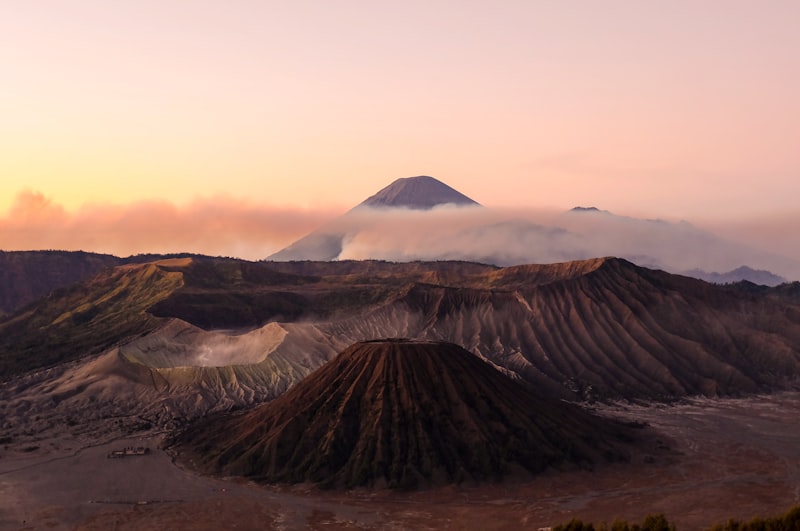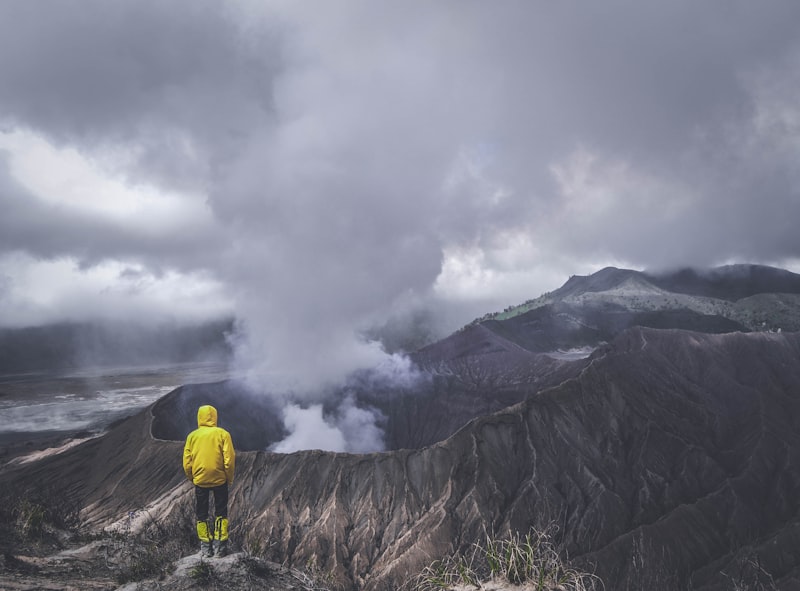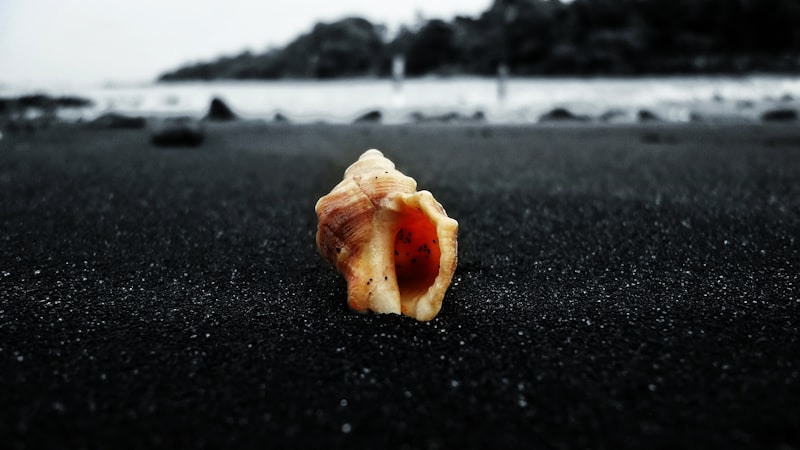Imagine standing on the edge of a crater, surrounded by the raw, untamed beauty of a volcanic landscape. The earth beneath your feet tells a story of ancient eruptions and geological transformations. Volcanic landscapes are not just geological formations; they are windows into the dynamic processes that shape our planet.

One of the most striking features of volcanic landscapes is their diversity. From towering stratovolcanoes like Mount Fuji in Japan to the gentle slopes of shield volcanoes such as Mauna Loa in Hawaii, each volcano has its own unique character. The rugged terrain, often covered in hardened lava flows and ash deposits, creates a surreal and otherworldly atmosphere.
But volcanic landscapes are more than just scenic vistas. They are hotbeds of geological activity, with geysers, hot springs, and fumaroles dotting the landscape. These hydrothermal features are fueled by the heat simmering beneath the earth’s crust, reminding us of the powerful forces at work deep below the surface.
Beyond their geological significance, volcanic landscapes often harbor unique ecosystems that have adapted to the harsh conditions. From hardy pioneer plants that colonize newly formed lava fields to specialized animals that thrive in the nutrient-rich soils, these environments showcase nature’s resilience and adaptability.
For adventurers and scientists alike, volcanic landscapes offer a treasure trove of opportunities. Climbers challenge themselves on steep slopes, photographers capture the interplay of light and shadow on rugged terrain, and researchers study volcanic activity to better understand our planet’s past and future.
Exploring natural volcanic landscapes is a journey into both the past and the future. It’s a chance to witness geological processes in action and to marvel at the beauty and resilience of the natural world. Whether you’re drawn by the thrill of adventure or the wonder of scientific discovery, these landscapes promise an unforgettable experience, leaving you with a deeper appreciation for the forces that shape our planet.
Unveiling Earth’s Fury: A Journey Through Natural Volcanic Wonders
Imagine standing on the edge of a crater, feeling the ground tremble beneath your feet as billows of smoke and ash rise majestically into the sky. This is the awe-inspiring world of volcanic wonders, where Earth’s fiery heart reveals its raw power and beauty.
Volcanoes, like silent giants, shape landscapes and ecosystems with every eruption. From the molten rivers of lava that carve their paths down mountainsides to the ethereal glow of hot springs nestled amidst barren terrain, each volcanic feature tells a tale of geological drama.
The allure of these natural marvels isn’t just in their spectacle; it’s in their unpredictability. No two volcanoes are alike, each with its own personality and history of eruptions. Some slumber peacefully for centuries, their slopes carpeted with lush vegetation and teeming with life. Others rumble and fume, a constant reminder of Earth’s restless energy.
Standing before such a force of nature, one can’t help but marvel at the contrasts it presents. Amidst the desolation of cooled lava fields, new life emerges resiliently, painting the landscape with hues of green and gold. It’s a testament to nature’s ability to adapt and thrive in the face of adversity.

But beyond their physical impact, volcanoes also hold cultural significance. For centuries, they have been revered and feared by civilizations around the world, often serving as both a source of inspiration and a symbol of destruction.
Whether exploring the steaming vents of Hawaii’s Kilauea or witnessing the explosive power of Japan’s Mount Fuji, each encounter with these volcanic wonders leaves an indelible mark. They remind us of Earth’s dynamism, its capacity for creation and destruction intertwined in a breathtaking dance.
In the realm of natural wonders, volcanoes stand as monuments to Earth’s fury—a reminder of our planet’s ceaseless transformation and the profound forces that shape our world.
From Fire to Beauty: Captivating Tales of Volcanic Landscapes
Picture the stark contrast between the barren, ash-covered slopes immediately after an eruption and the gradual rebirth of life as nature reclaims its domain. It’s a symphony of resilience and adaptation, where even the harshest environments eventually bloom with vibrant flora and fauna. This transformation from desolation to beauty mirrors the human spirit’s ability to thrive in adversity.
Each volcanic landscape is a unique canvas, painted with hues of black basalt, red lava flows, and greenery that springs forth from nutrient-rich soils. The iconic silhouette of volcanic cones against the horizon serves as a reminder of Earth’s dynamic forces at play. It’s as if nature itself is an artist, sculpting these dramatic vistas with unparalleled finesse.
But beyond their aesthetic allure, these landscapes harbor secrets of geological wonder. They offer glimpses into the planet’s turbulent past and ongoing processes, shaping not just the land but also influencing climates and ecosystems on a global scale. It’s a testament to the interconnectedness of Earth’s natural systems, where what happens deep within its crust can resonate across continents.
Visiting these volcanic landscapes is a journey through time and space, where travelers can witness firsthand the awesome power that shapes our planet. From the molten heart of volcanoes to the serene lakes nestled within their calderas, each sight invites contemplation and wonder. It’s an invitation to explore, to marvel, and to appreciate the intricate dance between fire and beauty that defines these remarkable places.
Secrets of the Earth: Exploring the Mystique of Volcanic Terrain
Imagine standing on the edge of a landscape shaped by the Earth’s fiery core—a world where molten rock meets the surface in dramatic displays of power and creation. Welcome to the mystique of volcanic terrain, where secrets of the Earth reveal themselves in every crag and crater.
Volcanic landscapes are not just geological marvels; they are storytellers of the Earth’s history. Each eruption leaves behind a unique tapestry of lava flows, ash deposits, and volcanic cones, painting a picture of the planet’s evolution over millions of years. From the towering stratovolcanoes like Mount Fuji in Japan to the sprawling shield volcanoes of Hawaii, these formations captivate with their sheer size and majesty.
But it’s not just about the visuals; volcanic terrain holds secrets beneath the surface as well. Beneath those hardened layers of lava lie hidden chambers of magma, sometimes dormant and sometimes restless. These chambers, pulsating with heat and energy, remind us of the Earth’s dynamic nature—a constant dance between destruction and creation.
Moreover, volcanic terrain isn’t just a static backdrop; it’s a vibrant ecosystem teeming with life against all odds. From the microbial organisms thriving in acidic hot springs to the unique flora that emerges from nutrient-rich volcanic soils, life finds a way to adapt and flourish in these extreme environments.
Why are volcanic terrains so captivating? Perhaps it’s because they challenge our understanding of the Earth’s limits and showcase its raw power. They remind us of our planet’s ability to shape and reshape itself, often with breathtaking beauty and sometimes with catastrophic consequences.
Exploring volcanic terrain isn’t just an adventure; it’s a journey into the heart of our planet’s secrets. It’s a chance to witness firsthand the forces that have shaped landscapes, climates, and even civilizations. So next time you stand on the edge of a volcanic crater or hike across a lava field, remember—you’re not just exploring land; you’re uncovering the secrets of the Earth itself.

This article aims to evoke wonder and curiosity while delivering informative content about volcanic terrain, crafted to engage readers with its vivid descriptions and intriguing insights into Earth’s geological wonders.
Nature’s Forge: Discovering the Dynamic Beauty of Volcanic Landscapes
Imagine standing at the edge of a landscape transformed by the raw power of nature’s forge – volcanic landscapes. These natural wonders, sculpted by fiery eruptions and molten lava, offer a breathtaking glimpse into Earth’s geological history and ongoing processes.
Volcanic landscapes are diverse and mesmerizing, ranging from towering peaks like Mount Fuji in Japan to expansive lava fields of Iceland. Each site tells a unique story of volcanic activity, shaping the land over millennia. The contrast between rugged volcanic rock formations and lush surrounding vegetation creates a surreal scenery that captivates adventurers and scientists alike.
One of the most striking features of volcanic landscapes is their dynamic nature. Volcanoes can lay dormant for centuries, only to awaken suddenly with spectacular displays of lava fountains and ash clouds. This constant cycle of eruption and dormancy contributes to the ever-changing beauty of these environments, where new land is created and ecosystems evolve against the backdrop of volcanic activity.
Visitors to volcanic landscapes often find themselves immersed in a sensory experience unlike any other. The sight of steaming vents and bubbling hot springs, the smell of sulfur in the air, and the feel of volcanic ash underfoot create a palpable connection to Earth’s primal forces. It’s a reminder of nature’s power to both destroy and create, leaving behind landscapes of stark beauty and ecological resilience.
Exploring volcanic landscapes isn’t just about witnessing geological phenomena; it’s also about understanding their significance in Earth’s natural history. Scientists study these sites to unravel mysteries of planetary formation and evolution, gaining insights into processes that shape not only our planet but potentially others in the cosmos.
Volcanic landscapes stand as testaments to Earth’s geological vigor and resilience. They inspire awe, ignite curiosity, and beckon adventurers to explore their dynamic beauty. Whether trekking across hardened lava flows or marveling at the sight of an active volcano, visitors to these landscapes are sure to leave with a deeper appreciation for the forces that forge our planet’s ever-changing face.
Frequently Asked Questions
What are the potential dangers of visiting volcanic landscapes?
Discover potential dangers when visiting volcanic landscapes, including risks of lava flows, toxic gases, volcanic ash, and unstable ground. Learn how to stay safe with proper preparation and following local safety guidelines.
Where are the most famous natural volcanic landscapes located?
Discover the world’s most renowned volcanic landscapes, found prominently in places like Iceland’s geothermal wonders, Hawaii’s majestic volcanic islands, Italy’s dramatic Mount Etna, Indonesia’s vibrant Ring of Fire, and New Zealand’s geothermal hotspots.
How can volcanic landscapes contribute to scientific research?
Volcanic landscapes contribute significantly to scientific research by providing unique environments for studying geology, geochemistry, and biodiversity. These areas offer insights into volcanic processes, mineral formation, and the adaptation of life forms to extreme conditions. Researchers study volcanic landscapes to understand Earth’s history, natural hazards, and even potential resources such as geothermal energy.
What are volcanic landscapes and how are they formed?
Volcanic landscapes are geographical areas shaped by volcanic activity, including features like volcanoes, lava fields, and volcanic ash deposits. They form when magma from beneath the Earth’s crust erupts onto the surface, creating various landforms through processes such as lava flows, ash deposition, and volcanic eruptions. These landscapes showcase the dynamic interaction between Earth’s internal forces and its surface, offering unique ecosystems and geological insights.
What are some recommended safety tips for exploring volcanic landscapes?
Discover essential safety tips for exploring volcanic landscapes to ensure a memorable and secure experience. Learn how to identify safe viewing points, recognize warning signs of volcanic activity, and adhere to designated trails. Prioritize protective gear and stay informed about local conditions and emergency procedures to enhance safety.


